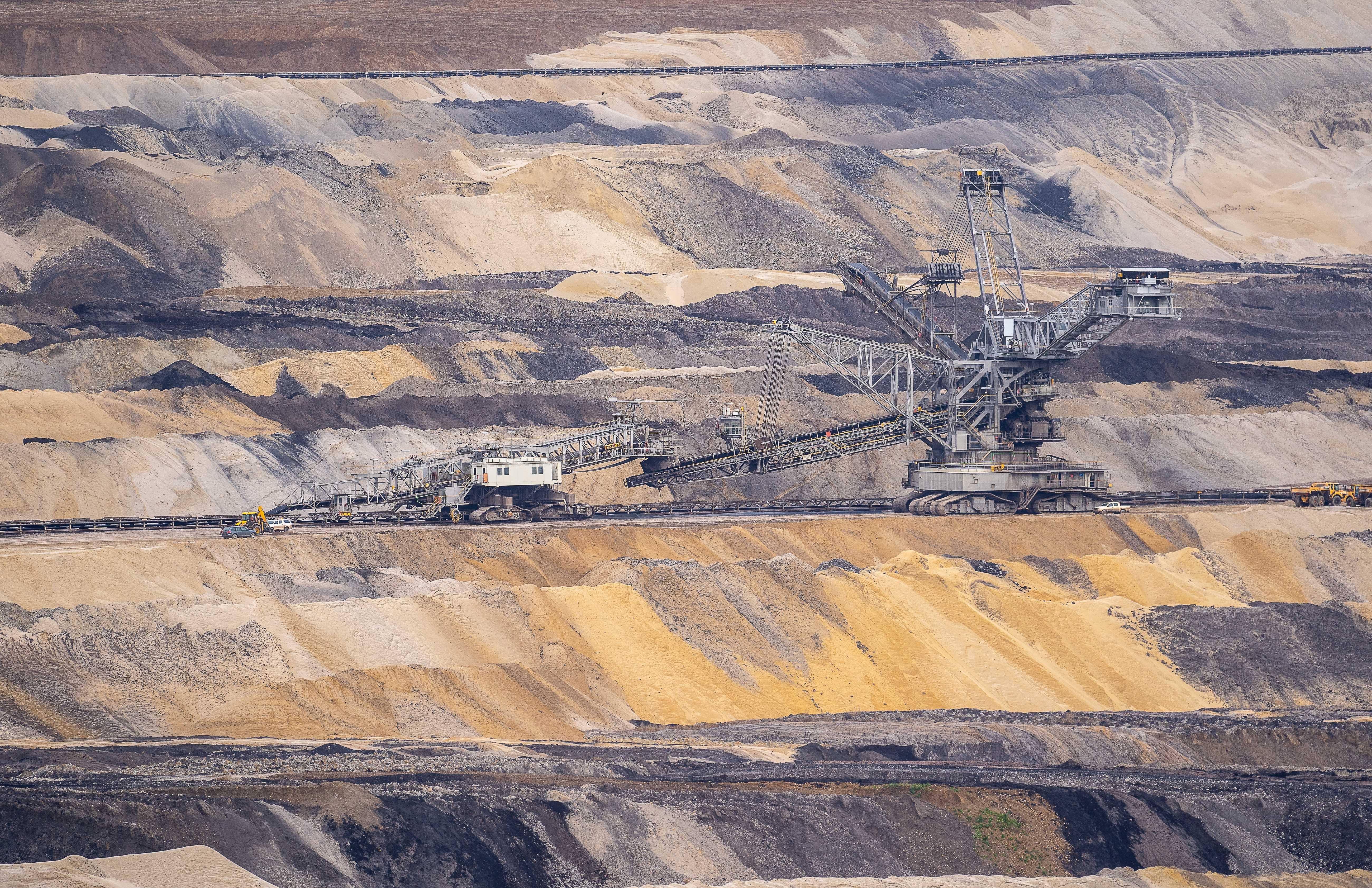Edge Intelligence Underground: How Barbara Is Powering Smarter, Safer Mining Operations
Remote mines can’t depend on the cloud. Edge AI processes data on-site, enabling real-time insights, less downtime, and smarter autonomous operations. It’s becoming the backbone of digital mining.
Edge AI in Mining: The Critical Shift Happening Now
Mining companies today operate some of the most sensor-rich, data-intensive environments in the industrial world. From haul trucks and crushers to concentrators and conveyors, every asset generates streams of information. Yet in remote pits, mountain-top processing facilities, and underground networks, one fundamental challenge persists: how to reliably process this data when bandwidth is scarce and connectivity to the cloud is inconsistent.
This is where Edge AI is rapidly becoming indispensable. Instead of routing data to distant data centers, mining operations are increasingly analyzing it where it is produced—at the mine face, on the truck, or inside the processing plant. By keeping intelligence at the edge, operations gain the ability to react in real time, maintain autonomy during network disruptions, and strengthen cybersecurity by minimizing data exposure. Across the industry, what was once considered experimental has shifted into mission-critical territory.
Predictive Maintenance: The First Major Breakthrough
Predictive maintenance has emerged as one of the clearest demonstrations of Edge AI’s value. By processing vibration, pressure, and temperature data locally, mining companies are detecting early signs of component degradation long before failures occur. BHP has deployed predictive models across its haul fleets and handling systems to significantly reduce unplanned downtime. Vale has taken a similar path, using onboard edge computing to generate real-time alerts that keep equipment in service longer. Rio Tinto has reported a 15% reduction in haul truck downtime after integrating edge-enabled predictive models into its fleet management strategy.
The result is a measurable increase in equipment availability, more efficient maintenance planning, and safer operating conditions—all without relying on continuous cloud connectivity.
From predictive maintenance to real-time process control, mining companies are already capturing measurable gains. BHP, Vale, and Rio Tinto have reduced unplanned downtime, extended equipment life, and improved fleet availability by processing sensor data directly at the edge

Process Optimization at the Speed of the Mine
Processing plants, especially concentrators, are also benefiting from edge-driven optimization. These environments rely on tight loop controls where milliseconds matter. Edge analytics can track ore grade variability, mill speed, and reagent levels, enabling instant adjustments that improve recovery, reduce energy use, and maintain product consistency.
Rio Tinto’s Gudai-Darri mine is a notable example, using edge systems to dynamically adjust conveyors and blending operations. BHP has deployed similar intelligence to streamline water and energy consumption, demonstrating that process stability and sustainability can progress together when real-time insights drive operational choices.
Autonomy and Remote Operations Become Feasible at Scale
The industry’s push towards autonomous and teleremote equipment has made the need for ultra-low latency processing even more evident. Autonomous trucks and dozers cannot afford delays caused by sending data offsite. Vale’s Brucutu mine—one of the largest autonomous haulage operations in the world—relies on onboard edge networks to process navigation decisions locally. Newmont’s Cadia operation has leveraged private 5G combined with edge nodes to run a fleet of teleremote dozers without the Wi-Fi dropouts that previously caused productivity losses.
These deployments underscore a core truth: autonomy at scale is only possible when the critical intelligence resides close to the machine.

A New Approach to Safety and Environmental Resilience
Safety systems, once dependent on human monitoring or delayed cloud analytics, are also being transformed. Real-time video analysis, gas-leak detection, fire-risk assessment, and environmental monitoring increasingly run on distributed edge devices.
OCP, for instance, uses LoRaWAN and edge computing to detect hazardous events across vast industrial zones, offering rapid alerts without relying on external connectivity. Anglo American has introduced edge-powered underground video analytics that detect unsafe behaviors and improve hazard response times. These systems represent a major step toward reducing exposure to high-risk conditions while meeting strict compliance requirements.
Energy Efficiency as a Strategic Advantage
As global mining companies pursue aggressive decarbonization targets, edge intelligence is helping optimize energy-intensive operations. Glencore has recorded notable improvements in concentrator efficiency by using on-site analytics to refine energy and chemical consumption. At BHP’s Escondida mine, edge-driven controls have contributed to more than 100 GWh in electricity savings and over 3 gigalitres of water savings—an achievement that underscores the link between digital advancement and environmental stewardship.
How Industry Leaders Are Scaling Edge Computing
Across the sector, major operators are adopting edge-first architectures:
- BHP has reduced unscheduled failures in fleets and conveyors and achieved major water and energy savings at Escondida.
- Rio Tinto runs real-time optimization at Gudai-Darri and supports remote-control operations from its Perth center.
- Vale has seen an 11% reduction in fuel consumption since adopting local processing for fleet autonomy.
- Newmont has eliminated network-related downtime in Cadia’s teleremote fleet using private 5G and edge nodes.
- Glencore is improving throughput and optimizing dosing systems through edge analytics.
- Anglo American enhances underground safety through edge-enabled video and proximity detection.
- OCP uses edge nodes as the backbone for scalable environmental protection across large industrial zones.
The pattern is clear: mining companies with geographically dispersed, high-risk operations are proving that edge computing is now essential infrastructure.
Mining’s most forward-leaning operators—including Glencore, BHP, and Rio Tinto—are using on-site analytics to reduce water usage, cut GWh-scale energy consumption, and optimize resource use

Barbara: Edge AI in Action
Barbara’s industrial edge platform is playing a key role in enabling these transitions. Designed for rugged, distributed environments, Barbara allows mining operations to connect legacy PLCs and SCADA systems, harmonize real-time data, and deploy AI models that continue running even during network outages. In recent deployments, engineers used the platform to monitor equipment health, optimize plant controls, and remotely manage software updates across edge devices. When connectivity dropped—a common occurrence in remote operations—the AI models kept running locally, ensuring uninterrupted decision-making.
This resilience stems from Barbara’s technical foundation: secure container orchestration, hardware-agnostic deployment, and native support for industrial protocols, all structured for large multi-site rollouts.
A More Intelligent Future for Mining
From autonomous fleets in Brazil to LoRaWAN safety networks in Morocco to advanced process control in Australia, Edge AI is reshaping mining operations across the globe. As edge technologies mature and become easier to orchestrate, mining companies will gain the ability to operate more sustainably, securely, and autonomously than ever before.
This shift is not optional. It represents the next frontier of industrial excellence—one where real-time intelligence at the edge becomes the defining capability of the modern mine.







